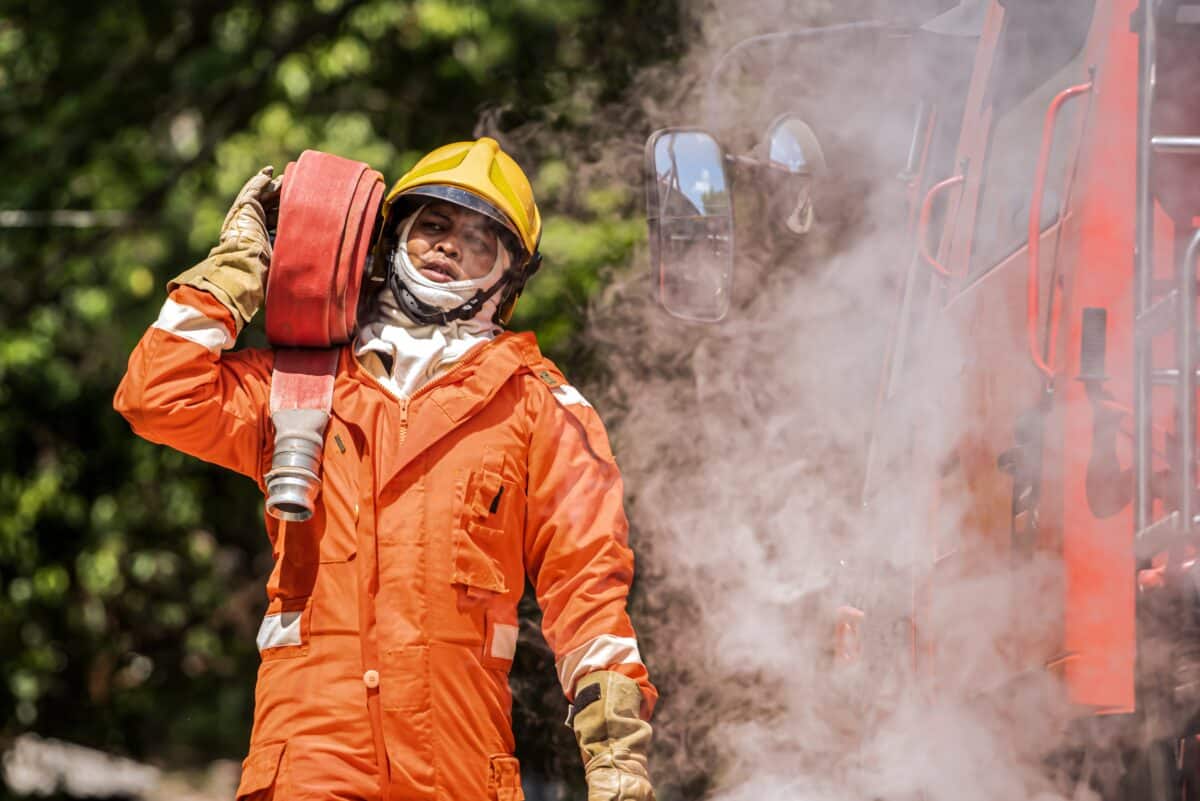
(Photo by Digital Art StudioTH on Shutterstock)
NEW YORK — Putting out fires, erecting buildings, serving in the military, and saving lives in emergency rooms—these occupations lead the pack as America’s most grueling jobs, according to a new nationwide survey. Firefighters claimed the top spot, with 48% of Americans ranking them as having the toughest job in the country.
The Talker Research poll, which surveyed 2,000 Americans — including 1,000 trade workers — offers a window into which occupations earn our respect for their difficulty and why some professions garner more appreciation than others.
Who Has It Hardest?
Construction workers (44%), military personnel (38%), and doctors (38%) rounded out the top positions behind firefighters. Police officers secured fifth place at 37%, followed by EMTs (35%) and astronauts (32%).
The results highlight our collective respect for those who face physical danger, make life-or-death decisions, or endure harsh conditions day after day.
When describing challenging work, respondents mentioned handling others’ problems without support, making split-second decisions under pressure, and tasks that test both physical and mental limits.
While 40% of employed Americans consider their own job difficult, a stark contrast emerged between trade and non-trade workers—50% of those in trades rated their jobs as difficult, compared to just 21% of non-trade workers. Most respondents (72%) believed trade workers face tougher conditions than others, with 81% feeling these workers don’t receive enough recognition for their contributions.

The Appeal of Trade Careers
Despite acknowledging the challenges, many Americans expressed interest in trade occupations. Nearly half of non-trade respondents would consider trade work as a career path, and 43% of people not currently working in trades have past experience in these fields.
The findings revealed strong support for trades as career options, with 88% of respondents saying they would encourage younger Americans to consider trade jobs.
Robert Hesse, regional president of Bosch Power Tools in North America, which commissioned the study, noted: “Pursuing a career in the trades offers benefits with hands-on experiences that cultivate practical skills and provide a lifelong sense of purpose.”
Trade workers emphasized points like earning a good living without college debt and performing essential work that keeps society functioning. As one respondent put it: “They maintain the things you love and use every day. They build the things that bring you daily comfort no matter the conditions.”
Another pointed out that trades require both brains and brawn: “It takes more than physical strength. You have to be smart and problem-solving.”
Safety on the Job: Life and Death Concerns
For trade workers, job safety emerged as a critical priority. With Construction Safety Week approaching, workers voiced needs for better safety support from employers, including proper equipment training (32%), general safety training (28%), and emergency response preparation (27%).
These concerns appear well-founded—over half of trade workers (57%) reported experiencing up to four “close calls” on the job during the past year. Among those who faced dangerous situations, 31% left jobs or worksites they deemed unsafe.
Hesse emphasized safety’s importance: “In the trades, every task carries weight — and so does every safety step… Safety is the foundation of every successful trade.”
The complete rankings show Americans particularly value jobs involving physical risk, emergency response, and essential services. Construction-related occupations appear frequently throughout the list of twenty occupations, while jobs like teaching (14%) and nursing (18%)—often noted for their emotional demands—ranked lower than those with immediate physical dangers.
The findings point to how Americans weigh job difficulty, with immediate physical risk often carrying more weight than long-term emotional strain when judging which occupations have it hardest.
Top 20 Most Demanding Jobs
- Firefighter — 48%
- Construction worker — 44%
- Military — 38%
- Doctor — 38%
- Police officer — 37%
- EMT or paramedic — 35%
- Astronaut — 32%
- Farmer — 29%
- Air traffic controller — 29%
- Oil worker — 25%
- Nurse — 18%
- Roofer — 16%
- Electrician — 16% [TIED]
- Home builder — 16% [TIED]
- Engineer — 15%
- Pilot — 14% [TIED]
- Teacher — 14% [TIED]
- Lawyer — 13%
- Carpenter, woodworker or cabinet maker — 12%
- Drywall/plaster installer — 12%
Methodology: Talker Research surveyed 1,000 general population Americans and 1,000 American trade workers; the survey was commissioned by Bosch Power Tools and administered online between April 8 and April 17, 2025. The survey used a non-probability frame with traditional online access panels where respondents participated for incentives, and programmatic sources offering virtual incentives related to online activities. Respondents not fitting the specified sample were excluded. Dynamic online sampling adjusted targeting to meet planned quotas. The survey was in English, with respondents receiving small cash-equivalent points for completion. Analysis only included cells with at least 80 respondents, with statistical significance calculated at 95% confidence. While data wasn’t weighted, targeting quotas helped achieve the desired sample. Quality checks excluded speeders (completing in less than one-third of median time), inappropriate open-ended responses, bots (identified via Captcha), and duplicates (prevented through digital fingerprinting). The survey was limited to internet users, so results may not apply to those without internet access.







